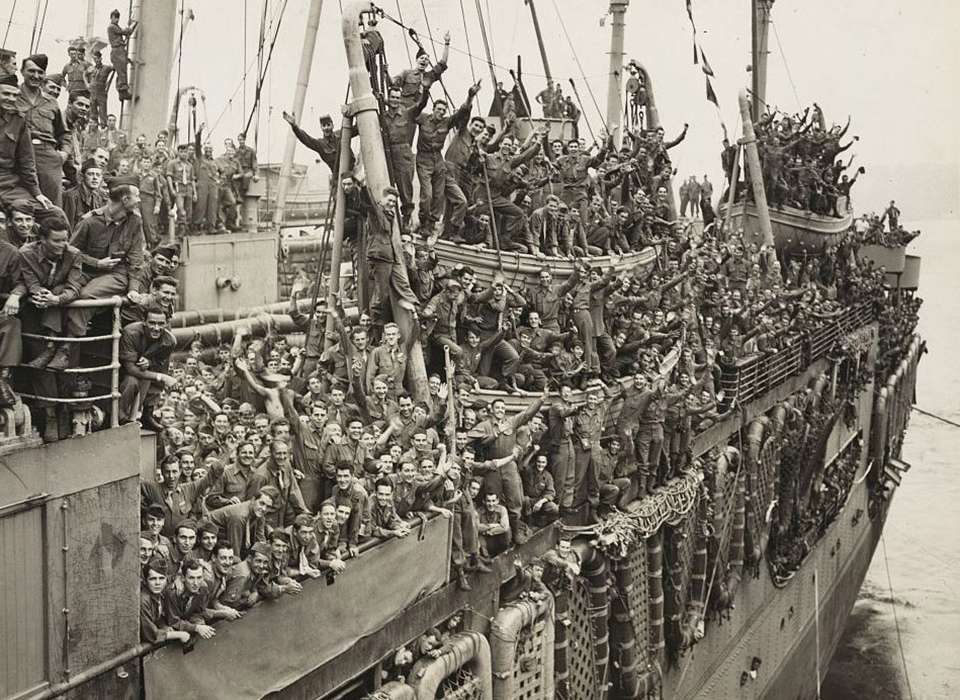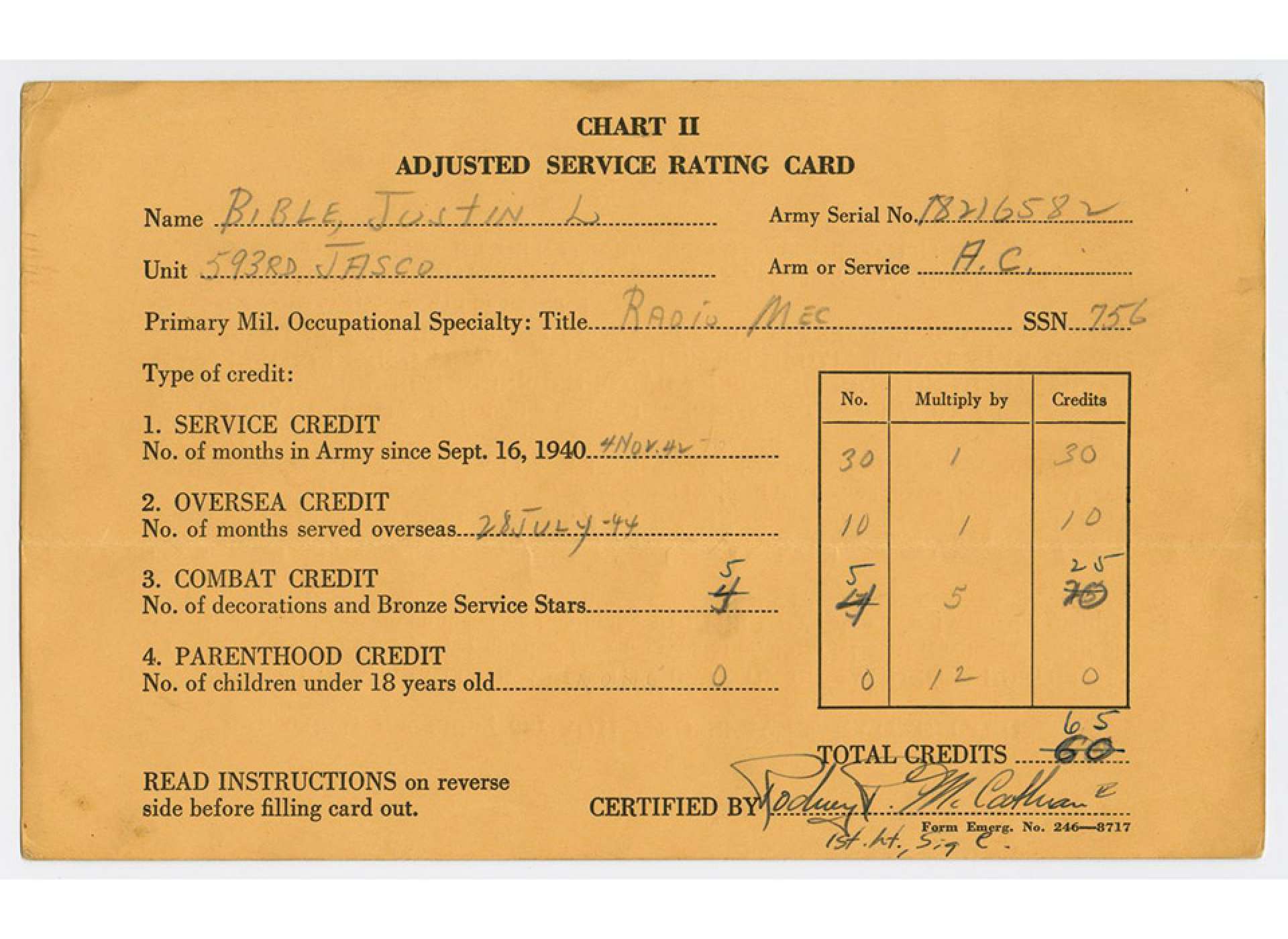
In the summer of 1945, the United States military was faced with two imperatives. A war weary American people wanted its soldiers to start coming home after Germany's surrender in May 1945 and many soldiers in the Pacific Theater would be needed for the planned invasion of Japan, while additional soldiers from the European Theater would be required to be transferred to the Pacific.
To accommodate both needs, the Army came up with the point system described in this article from the National WW2 Museum (and from which the photos in this post are taken). Servicemen got credit for:
Here's a sample card showing how the calculation worked:
It required 85 points before a serviceman was eligible to be sent home. The system led to a lot of grousing by soldiers who didn't qualify (mostly because of not having dependent children).
There was an additional factor that summer, for the soldiers being sent from Europe to the Pacific - the knowledge that the landings in Japan would be bloody, with a high likelihood they'd be killed or wounded.
It was also a big worry for those already in the Pacific. The Marines had their own system for rotation which required participating in three amphibious landings before you could be sent back to the states. For those like Eugene Sledge, who'd made it through the bloodbaths on Peleliu and Okinawa unscathed physically, it meant having to test their luck a third time on Kyushu or Honshu.
With Japan's surrender in August, the Army reduced the points required for returning to the States, and by the end of the year more than four million soldiers had been discharged.
I'll also point out that with the discussion around the recent release of Oppenheimer (which we plan to see in the next week or so), there is a possibility that the invasion of Japan might not have occurred even if the atomic bombs had not been dropped and Japan not surrendered in August 1945. For more on the grim alternative American end strategy, read Downfall: Ending the War with Japan).
No comments:
Post a Comment